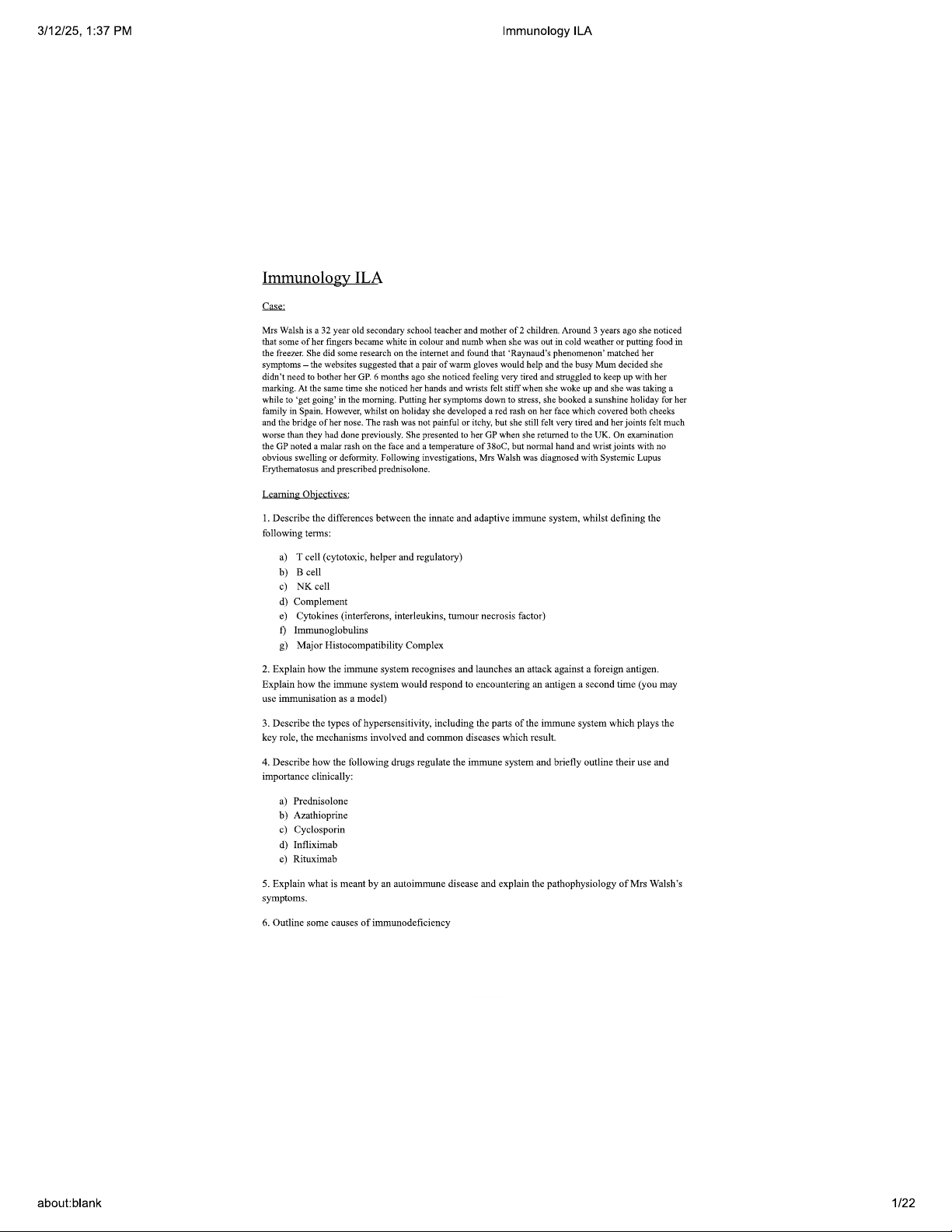
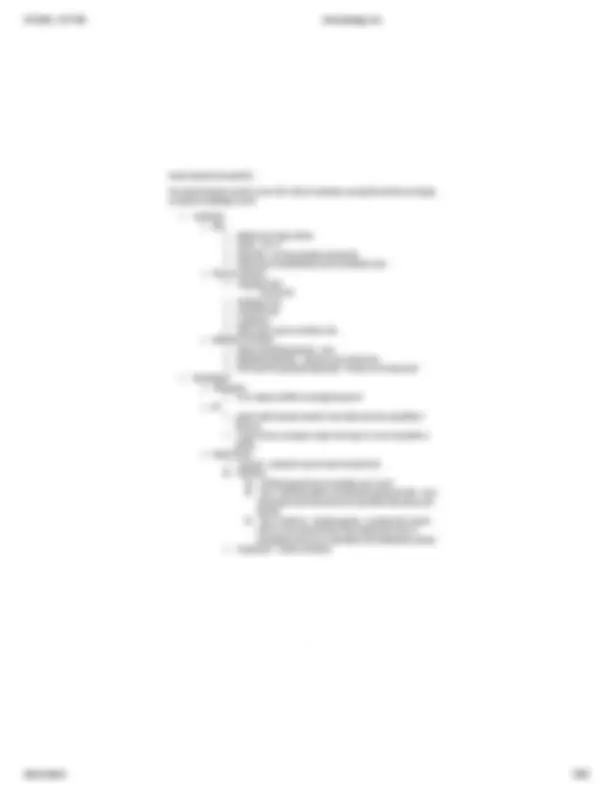
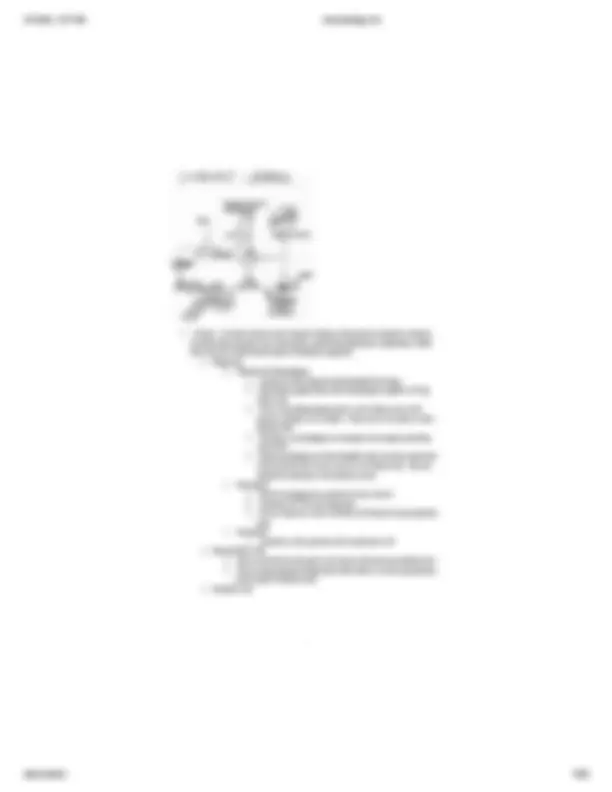
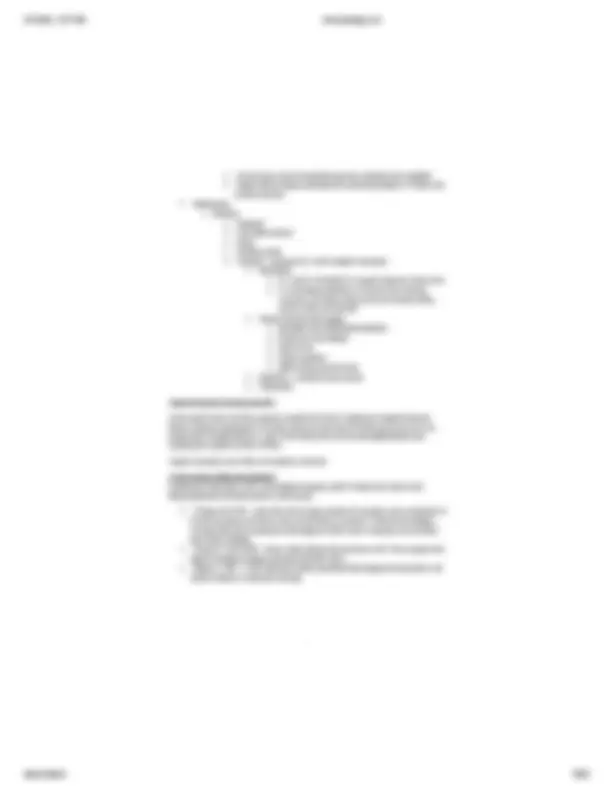
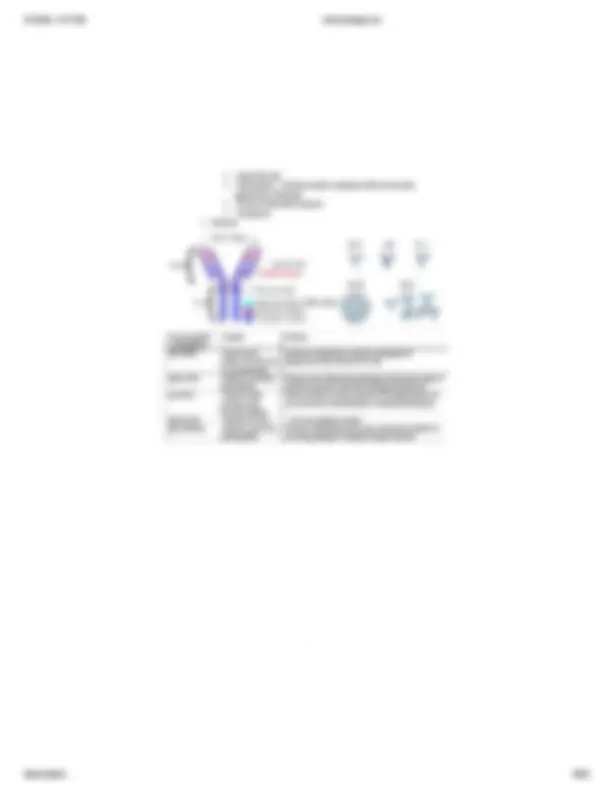
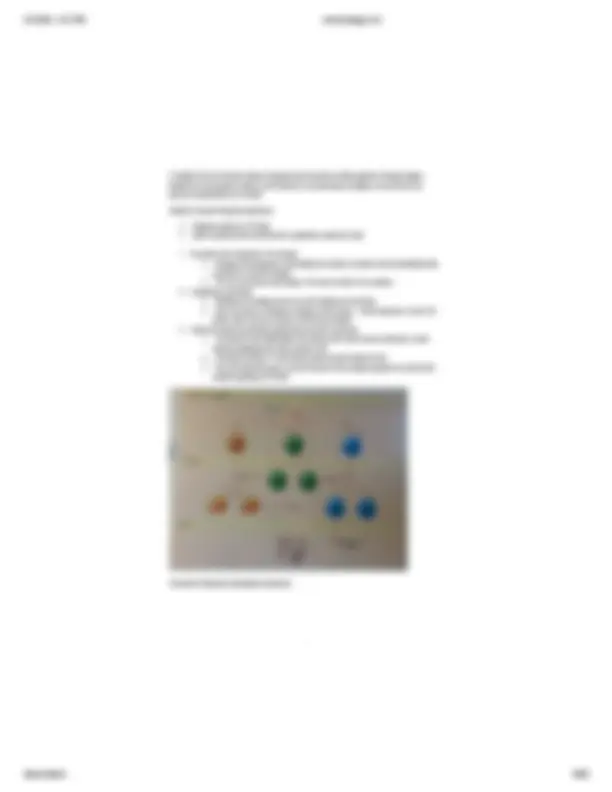
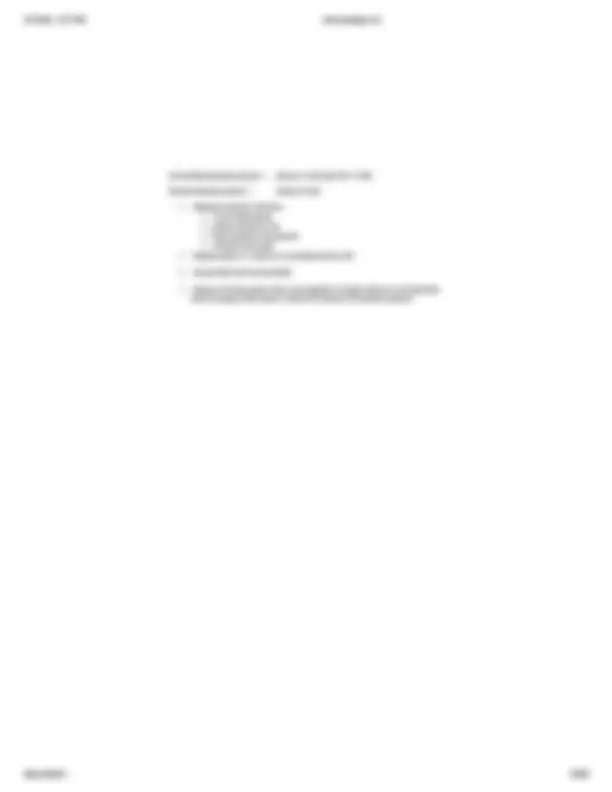










Study with the several resources on Docsity

Earn points by helping other students or get them with a premium plan


Prepare for your exams
Study with the several resources on Docsity

Earn points to download
Earn points by helping other students or get them with a premium plan
Community
Ask the community for help and clear up your study doubts
Discover the best universities in your country according to Docsity users
Free resources
Download our free guides on studying techniques, anxiety management strategies, and thesis advice from Docsity tutors
The document is an Immunology Integrated Learning Activity (ILA) from a medical course, focusing on the immune system and its disorders. It presents a case study of Mrs. Walsh, a 32-year-old teacher diagnosed with Systemic Lupus Erythematosus (SLE), exploring her symptoms and treatment with prednisolone. The learning objectives cover key immunology concepts, including the differences between innate and adaptive immunity, roles of T cells, B cells, NK cells, cytokines, and the Major Histocompatibility Complex (MHC). It also delves into hypersensitivity reactions, autoimmune diseases, and immunodeficiency causes. The document provides detailed explanations of immune responses, including primary and secondary responses, and discusses the mechanisms of various immunomodulatory drugs like prednisolone and rituximab. Overall, it’s a comprehensive resource for understanding immunology in a clinical context.
Typology: Study notes
1 / 22

This page cannot be seen from the preview
Don't miss anything!














